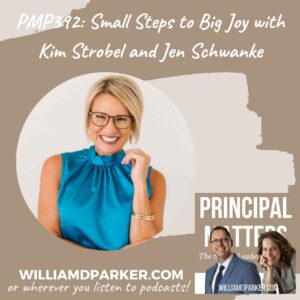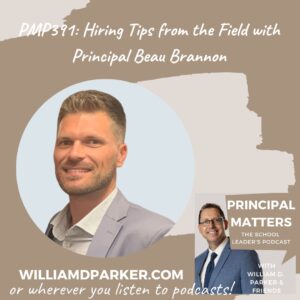Podcast: Play in new window | Download
A few weeks ago, I was sharing with a group of principals one of my favorite video-clips from the movie, The Incredibles.

It’s the scene where Lucius, aka the superhero, Frozone, is watching as his city is under attack from his apartment window. He pushes a button on his remote control to open a wall in his living room. When the secret compartment opens, the space is empty where his supersuit should be hanging. Thus ensues the following dialogue:
Lucius: Honey? Where’s my super suit?
Honey: What?
Lucius: Where – is – my – super – suit?
Honey: I, uh, put it away.
Lucius: Where?
Honey: Why do you need to know?
Lucius: I need it!
Honey: Uh-uh! Don’t you think about running off doing no derrin’-do. We’ve been planning this dinner for two months!
Lucius: The public is in danger!
Honey: My evening’s in danger!
Lucius: You tell me where my suit is, woman! We are talking about the greater good!
Honey: ‘Greater good?’ I am your wife! I’m the greatest *good* you are ever gonna get!
After watching this clip, I then asked the principals to reflect: How does this scene remind you of the tension you sometimes feel between your school responsibilities and your home life?
After we talked about their responses, I then shared three ideas for them to keep in mind as they feel the tension of managing crisis while also managing all the other important duties of their school leadership:
1. Staying mindful: Really seeing the great learning moments happening around you even as you take care of business.
2. Staying intentional: If you don’t schedule and prioritize what’s most important, it probably will not happen.
3. Moving the needle: At the end of everyday, reflect on one step you took toward reaching your targets or goals. And make sure you’ve done at least one action to move in that direction.
I then asked them to repeat back to me the three takeaways. Based on their responses, I summarized and reminded them that school leadership allows involves a balance of putting out situational fires while also focusing on the many other important tasks of building a school community.
And then I asked an important follow-up question: Now, can you unpack the instructional methods I just used in this short mini-lesson with you?
They were quick to respond: We began with an attention grabber. They had given feedback and input. We engaged in reflection and dialogue. We discussed three actions to consider in their leadership. I had checked for learning. We summarized our learning.
After this quick lesson, I reminded them that the cycles of learning happen in every setting. Whether you are leading a faculty meeting, a small group discussion or covering a classroom lesson, this cycle is important for us to model for our teachers as much as it is for us to encourage them to use it in their own teaching.
How Do You Make Learning Stick?
As you think about the ways to make learning meaningful, I am excited to introduce you to this week’s podcast guest, LeAnn Nickelsen, as we discuss her newest book co-authored with Melissa Dickson, Teaching With the Instructional Cha-Chas: Four Steps to Make Learning Stick. In her book and our discussion, LeAnn unpacks the learning cycle and provides practical ways for educators to increase learning for all students.
LeAnn’s Bio

LeAnn Nickelsen is the Founder and CEO of Maximize Learning, Inc. An author of 14 practical books for educators, she provides a wealth of information to School Districts in active, fun, and targeted professional development. A former teacher of the year, she has worked with teachers and school leaders in more than 450-schools in 49-states. LeAnn is an expert coach helping teachers incorporate best practices into their daily lesson plans and within their classrooms. LeAnn also loves to ski with her family, and in her spare moments, she loves drinking tea and petting her dog, Bella. And she’s the mother of college-age twins.
Chunk, Chew, Check, and Change
Here’s a snap-shot of our conversation, but listen to the entire episode for more powerful examples and takeaways:
WILL: One of the reasons I’m excited to talk about your book is because I’ve seen you present this material to teachers and leaders. School leaders want to provide better instructional coaching to their teachers. How can your catchy phrase Cha-Chas help school leaders better understand how to make learning stick?
LEANN: There is a lot of research and training in brain research. But how do we bring all those concepts together? The answer is in these four words: Chunk, Chew, Check, Change… Using the right learning cylces will double or triple the speed of learning for students. Collective teacher efficicacy, for instance, can produce three years of learning growth in student achievement. And even the most vulnerable student populations benefit greatly when teachers understand how to do this correctly.
But first you need the right foundation. And allignment happens first. Teachers must first undersand what standards they should be teaching. Within each standard, you have a specific learning target. Through baby-steps, you break down those into achievable learning targets. Ask yourself: What does your learning target have to do with the lesson you are presenting? Also, how are you using daily formatives? These questions must be answered first so that you have effective lesson planning.
Once you have your foundation for learning through understanding standards and learning targets, then you have a lesson plan that can break your learning into the Cha Cha’s:
Step 1 – Chunk It
Once you know your learning target, chunk the content into small amounts. The max amount is 14-15 minutes before you lose student engagement. So many factors affect the abilities of students to process learning, so break the learning into chunks of learning.
Step 2 – Chew It
Learning occurs here by finding buy-in, making connections, using memory-tools for high student engagement. Learning must be relevant for students to understand it. Have students act out or re-teach information. Have them physically and verbally engaging with the content. Ensure that all students are engaged, not just the ones normally engaged. Learn and talk, use dry-erase boards for feedback. The key is that differentiation happens throughout.
Step 3 – Check It
Everytime you pause, you have an opportunity to check for learning. It’s important to remember the four E’s: Examine Evidence Everyday from Every single student! This is a big part of equity. That feedback helps you understand the quality of your instruction.
Step 4 – Change It
One of the reasons we don’t see improvements is because we aren’t changing our instruction. We don’t want imperfect practice because it embeds wrong ideas. Change your pace. Pull students into individual instruction. Give verbal feedback to close gaps faster. Re-teaching is a powerful way to ensure all students have actually met the learning targets.
Let’s Wrap This Up
This conversation is just the tip of the iceberg for the many practical ideas and applications that LeAnn shares in this episode and in her book. As we wrapped up our interview, she explained: “We have to raise the urgency among all educators to use teaching methods that actually work in improving student learning. And that power rests in the magic hands of our teachers so that no student falls between the cracks. Effective learning can be done, and it is being done!”
If you’d like to receive a free copy of LeAnn’s bi-monthly newsletter for educators, check out her resources at https://maximizelearninginc.com or email her at leann@maximizelearninginc.com.
Now It’s Your Turn
How can you can you apply the four C’s to your own cycles of learning? How can you embed these in the lessons and professional learning you are doing with your own staff and teachers? Share this post with your teachers and ask them to reflect on ways Chunk, Chew, Check and Change may help their own teaching cycles.
Sign-Up For Free Updates and Ebook
When you enter your email address below, you will automatically receive my newest posts and a free Ebook, 8 Hats: Essential Roles for School Leaders. Let’s keep learning together!


